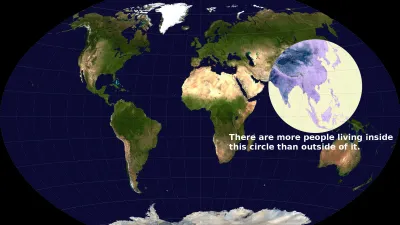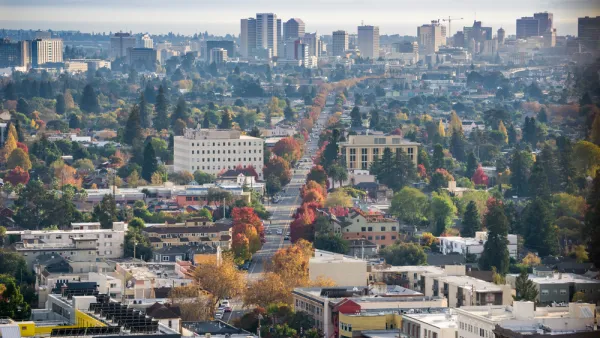A simple graphic posted to Reddit recently shows that more than half of the world's total population resides within a circle drawn over Asia. For Matthew Yglesias, it "underscores the fundamental truth of 21st-century economics."

As Caitlin Dewey explains in The Washington Post, the above graphic, which was posted by Reddit user valeriepieris, covers 19 Asian countries in which 3,637,830,357, or roughly 51.4 percent of the global population resides.
For Yglesias, the graphic illustrates Asia's emergence after two centuries of Western-led growth. "We had an approximately 200-year span in which an enormous amount of economic growth and geopolitical influence were located in Western Europe and its colonies in North America, but it's still the case that people mostly live in Asia."
"So now that all the countries inside the circle are politically independent and only a handful of them are still governed by totally insane ideologies, we should expect most of the action to happen where most of the people are," he continues. "That means most of the manufacturing, but also most of the innovation and most of the popular culture. Both the producers and consumers of everything live over there."
FULL STORY: Everybody Lives in Asia

National Parks Layoffs Will Cause Communities to Lose Billions
Thousands of essential park workers were laid off this week, just before the busy spring break season.

Retro-silient?: America’s First “Eco-burb,” The Woodlands Turns 50
A master-planned community north of Houston offers lessons on green infrastructure and resilient design, but falls short of its founder’s lofty affordability and walkability goals.

Delivering for America Plan Will Downgrade Mail Service in at Least 49.5 Percent of Zip Codes
Republican and Democrat lawmakers criticize the plan for its disproportionate negative impact on rural communities.

Test News Post 1
This is a summary

Test News Headline 46
Test for the image on the front page.

Balancing Bombs and Butterflies: How the National Guard Protects a Rare Species
The National Guard at Fort Indiantown Gap uses GIS technology and land management strategies to balance military training with conservation efforts, ensuring the survival of the rare eastern regal fritillary butterfly.
Urban Design for Planners 1: Software Tools
This six-course series explores essential urban design concepts using open source software and equips planners with the tools they need to participate fully in the urban design process.
Planning for Universal Design
Learn the tools for implementing Universal Design in planning regulations.
EMC Planning Group, Inc.
Planetizen
Planetizen
Mpact (formerly Rail~Volution)
Great Falls Development Authority, Inc.
HUDs Office of Policy Development and Research
NYU Wagner Graduate School of Public Service





























